Science Report 21 November 2019
SOL: 11
Crew 215 – Expedition Boomerang Crew
Submitted by Science Officer Andrew Wheeler
Science Dome Operations: The experimenting with gypsum and sand to create a form of plaster of paris cement was completed. After drying, the tiles will be ready for strength testing. Approximately 10ml of water was collected as a product of the heating and will be tested as suitable for medical solutions. In the afternoon, fine grained, pure gypsum was heated and prepared as a plaster of paris and a small splint was successfully molded and used to immobilize an index finger.
Green Hab: Green Hab operations have continued with additional seeds and seedlings being planted. See Green Hab report.
RAM Operations: N/A
EVA: N/A
EVA Suit Maintenance: Nominal. See Operations Report.
Psycho-social Stressors Monitoring: Data collection continues through the hexoskin(TM) monitoring vests. A final checklist-supported response simulated emergency was carried out in the afternoon to further test the stress on untrained personnel involved in medical emergencies in isolated situations.
Additional activities: N/A
Sol Summary Report – November 21th
Crew 215 Sol Summary Report 21-NOV-2019
Sol: 11
Summary Title: Finishing up Experiments
Author’s name: Andrew Wheeler
Mission Status: Active
Sol Activity Summary: More overnight rain continued to leave the environs impassable but a strong wind in the early morning had things drying out. After the morning brief, more seedlings and seeds were planted in the Green Hab and, in the Science Dome, the making of gypsum tiles continued. The final tiles were completed in the afternoon and have been left out to dry. Just after lunch, the final emergency simulation was carried when a checklist-supported response was initiated for an injured crew member within the hab. It was successfully carried out and evaluated. Meanwhile, another test of the gypsum powder was devised when a small splint was manufactured and applied to a simulated broken index finger. Though it was applied before being fully set, the gypsum splint proved successful in immobilizing the finger for 2 hours before it was removed. A further 1.5ml of water was collected for testing as a basis for medical grade solutions. Dinner tonight was tortilla soup with fresh bread followed by chocolate pudding with jelly, fruit salad and peanut butter cookies.
Look Ahead Plan: Cleaning of staterooms and living areas, inventorying food and equipment and cleaning of the Science, Green Hab and RAM areas in preparation for end of rotation handover. Packing away of experiments and personal equipment.
Anomalies in work: N/A
Weather: Rain and clouds clearing, light winds.
Crew Physical Status: Healthy
EVA: N/A.
Reports to be file: Sol Summary Report, Operations Report, Science Report, Green Hab Report, Journalist Report, Daily Photos.
Support Requested: N/A
Crew 215 Crew Photos 20Nov2019
[title Crew Photos – November 20th]
Operations Report – November 20th
Crew 215 Operations Report 20-Nov-2019
SOL: 10
Name of person filing report: Shane Usher
Non-nominal systems: N/A
Notes on non-nominal systems: N/A
Generator: run
Hours run: 12 h 0 min
From what time last night: 1900
To what time this morning: 0700
List any additional daytime hours when the generator was run: N/A
Solar— SOC % (Before generator is run at night): 82%
Diesel Reading – 45%
Station Propane Reading – 66%
Ethanol Free Gasoline: N/A
Water (loft tank) (gal): 47
Water Meter (units): 1459633
Water (static tank) (gal): 300
Static to Loft Pump used – yes
Water in Green Hab (gal): 239.1
Water in Science Dome (gal): 0
Toilet tank emptied: no
Deimos rover used: no
Hours: –
Beginning charge: –
Ending charge: –
Currently charging: –
Sojourner rover used: Assigned to Director
Hours: –
Beginning charge: –
Ending charge: –
Currently charging: –
Spirit rover used: no
Hours: 111.7
Beginning charge: (Before EVA): 100%
Ending charge: (On return from EVA, before recharging): 100%
Currently charging: yes
Opportunity rover used: no
Hours: 68
Beginning charge: 100%
Ending charge: 100%
Currently charging: yes
Curiosity rover used: no
Hours: 118.1
Beginning charge: (Before EVA) : 100%
Ending charge: (On return from EVA, before charging): 100%
Currently charging: yes
Notes on rovers: N/A
ATV’s Used: (Honda, 300, 350.1, 350.2, 350.3): no
Reason for use: N/A
Oil Added? no
ATV Fuel Used (gal): 0
# Hours the ATVs were used today: 0
Notes on ATVs: Assigned to the director
HabCar used and why, where? With Director
CrewCar used and why, where? At Grand Junction awaiting Crew 216
General notes and comments: N/A
Summary of internet: Functional
Summary of suits and radios: N/A
Summary of Hab operations: N/A
Summary of GreenHab operations: Atmospheric equalization to the green hab carried out
during the afternoon, plants were watered (16L,4.6 gal). Door closed at 5pm, heater on
overnight.
Summary of Science Dome operations: Gypsum brick synthesis experiments conducted.
Summary of RAM operations: N/A
Summary of any observatory issues: Nominal
Summary of health and safety issues: All crew healthy
Questions, concerns and requests to Mission Support: N/A
[end]
Crew 215 Journalist Report 20Nov2019
[title Journalist Report – November 20th]
Wed 20 Nov Sol 10
by Guy Murphy
Water is important out here in the desert, but it is not always in the right place.
Crew maintenace of the MDRS campus includes regulating and monitoring its use, given
all water here needs to be brought in. It is rationed, and used thoughfully, in the Hab
and the Greenhab. Water can be in the wrong place when it rains, and as anticipated,
there was heavy rain last night. In the morning the pot holes, depressions and cracks
in the ground were filled with water, the clays acting as aquicludes, forming an
impermeable barrier preventing it from draining away. The crusty surface had become
slipperly mud, the landscape looking more like the liquid methane-drenched surface of
Titan than dry, dusty Mars.
Water is the focus of the in situ resource utilisation (ISRU) research we have been
undertaking during Crews 214 and 215. ISRU is a key concept for pioneering Mars. It
involves producing key products needed for human survival using resources available on
the Martian surface, rather than bringing them from Earth. These may include water,
oxygen, fuel, energy, building or industrial materials but most importantly water. It
is possible, but extremely costly to launch these things from Earth, and then it needs
to be delivered on site to exactly where it is needed. Why import your water, if you
can obtain it on site?
Andrew Wheeler’s ISRU experiments involve extracting water from the gypsum that we have
been collecting from surrounding localities whilst on EVA. This is a hydated mineral
similar to those found in surface deposits on Mars. Heating the gypsum causes the water
to be released, and today Andrew and Larissa collected over 10 millilitres from the
formerly dry, crystalline rock. This demonstrates a process which could, in principle,
be used to obtain water on Mars. This is important for human consumption, plant
production and for creating secondary products such as oxygen and hydrogen for further
processing.
Larger settlements of more than a temporary character will need Martian manufactured
building materials. To this end, its should be possible to make bricks, concrete, glass
and metals using available surface resources. Today we tested a potential Martian
technology. Andrew and Larissa used a dehydrated gypsum (called anhydrite) and sand mix
to create small cement tiles for strength testing.
[end]
Crew 215 Greenhab Report 20Nov2019
[title Greenhab Report – November 20th]
Crew 215 GreenHab Report 20-11-2019
GreenHab Officer: Guy Murphy
Environmental control: Door left open for ventilation midday then reclosed 5pm as the
day was overcast.
Average temperature: 28C (temperature read 2:20pm)
Hours of supplemental light: Automatic system
Daily water usage for crops: 16 litres (2 full blue watering cans).
Daily water usage for research and/or other purposes:
Water in Blue Tank –
Time(s) of watering for crops: 8:30am.
Changes to crops: No changes. Filled 15 medium pots with soil to receive
tomato/capsicum seedlings when they are of sufficent size.
SEASONAL PLANTING HISTORY
Established plants introduced 03/11/2019
[3x] strawberry plants (Everbearing), in medium metal planter
[1x] spicy orange thyme (thymus fragantissimus), small terra cotta pot
[1x] lemon balm scented geranium (pelargonium x Melissinum), small terra cotta pot
[1x] Mint Mentha – Berries & Cream, small terra cotta pot
[1x] Pineapple Mint – mentha suaveolens variegated, small terra cotta pot
[1x] Ice plant – Delospermo ‘jewel of the desert garnet’, small terra cotta pot
[1x] Sempervium textorum assorted Hen & Chicks, small terra cotta pot
[1x] Rosemary ‘Barbecue’ (Rosmarinus officinalis ‘Barbecue’), large plastic pot
[1x] Rosemary ‘Spice Island’ Rosmarinus officinalis ‘Spice Island’, large plastic pot
[1x] mint, grapefruit, large plastic pot
[2x] small Aloe Vera, in medium metal planter, frost damaged (removed 1311219)
Seeds Planted 04/11/2019 (Large metal planting tub)
Greek Oregano – Origanum heracleoticum
Chives – Allium schoenoprasum
Sweet Marjoram – Origanum majorana
Lemon Balm – Melissa officialnis
Sage – Savia Officinalis
Thai Basil – Siam Queen
German/Winter Thyme – Thymus vulgaris
Seeds Planted 10/11/2019 (Large metal planting tub)
Corinader – Coriandrum Sativum
Seeds Planted in12/11/2019 (2 smaller planting tubs)
Carrots ‘Purple Sun F1’
Radish ‘icicle’
Seeds Planted 13/11/2019
Perpetual Spinach, Rocket, Spinach ‘Lakeside F1’in medium metal planter.
Tomato (Chocolate Cherry) and Tomato Pole Roma in small pots for transplantation.
Seeds Planted 14/11/2019
Tomato (Chocolate Cherry) and Tomato Pole Roma in small pots for transplantation.
Onion (Evergreen White Bunching)
Cucumbers (Patio Snackers F1) in hanging pot
Pepper (Mini Bell Color Mix) in small pots for transplantation.
Seeds Planted 15/11/2019
Acorn Pumpkin in a small pot for future transplantation. Seed taken from a pumpkin
brought to the Hab at start of rotation as a vegetable.
Snow Peas in 2 hanging pots.
Bulbs planted 19/11/2019
25 white Narcissus bulbs (Paperwhites ‘Ziva’)
Planted into 3 small terra cotta pots & 2 long planter boxes.
Other seeds stored in the Greenhab are identified as –
Rocket ‘Arugula Rocket Salad ‘Rocky’ (Diplotaxis tenuifolia), 1/2 packet
Spinach ‘Lakeside F1’, 1/2 packet
Carrots ‘Purple Sun F1’ – 1/2 packet
Radish ‘icicle’ – 1/2 packet
Snow Pea (Oregon Giant)
Cucumbers (Patio Snackers F1), 1/2 packet
Onion (Evergreen White Bunching), 1/2 packet
Pepper (Mini Bell Color Mix), 1/2 packet
Perpetual Spinach (Green Leaf Chard), 1/2 packet
Partly used packed of seed have been stored in the provided tin to protect from vermin.
This will also also repropogation later in the season to stagger harvest times and
allow resowing if crops are lost.
Harvest: None
Support/supplies needed: Last night 3 bags potting mix, 5 bags garden soil & 2 aloe
vera plants were delivered.
Crew 215 Science Report 20Nov2019
[title Science Report – November 20th]
Science Report 20 November 2019
SOL: 10
Crew 215 – Expedition Boomerang Crew
Submitted by Science Officer Andrew Wheeler
Science Dome Operations: The experimenting with gypsum and sand to create a form of
plaster of paris cement continued. 22 cement tiles were created and set aside to dry
for strength testing. The remaining 10 tiles from this programme should be completed
tomorrow. Water liberated from the gypsum has been successfully collected and
approximately 10ml has been bottled. Time permitting tomorrow, an actual gypsum plaster
of paris will be created and the making of splints will be demonstrated.
Green Hab: Green Hab operations have continued with pots filled awaiting the planting
of additional seeds and seedlings. See Green Hab report.
RAM Operations: N/A
EVA: N/A
EVA Suit Maintenance: Nominal. See Operations Report.
Psycho-social Stressors Monitoring: Data collection continues through the hexoskin(TM)
monitoring vests.
Additional activities: Cleaned airlocks following rain event and attended to three
false alarms of the smoke detectors (caused by water/humidity).
Crew 215 Sol Summary 20Nov2019
Crew 215 Sol Summary Report 20-NOV-2019
Sol: 10
Summary Title: Rain on Mars?
Author’s name: Andrew Wheeler
Mission Status: Active
Sol Activity Summary: Overnight rain made the environs impassable so all activities
were confined to the habs. In the Green Hab, pots were filled in preparation for more
seedlings and in the Science Dome, gypsum was heated and rehydrated to create cement
tiles that were set aside for drying and strength testing. There are only 10 more
planned for this expedition. In addition, the water liberated from the heating process
was captured and will be investigated for suitability as a basis for medical solutions.
Meanwhile, the main hab became a haven for report writing. The afternoon saw more
gypsum cement tiles were constructed and dinner approached. Tonight,it was a spicy
jambalaya followed by chocolate chip cookies and lime and pineapple jelly.
Look Ahead Plan: Plantings in the Green Hab, the final 10 gypsum cement tiles to be
created and set aside for drying and an actual gypsum plaster of paris milled for a
splint making demonstration.
Anomalies in work: Three false alarms with smoke detectors (caused by water/humidity).
Weather: Rain and clouds clearing, light winds.
Crew Physical Status: Healthy
EVA: N/A.
Reports to be file: Sol Summary Report, Operations Report, Science Report, Green Hab
Report, Journalist Report, Daily Photos.
Support Requested: N/A
Journalist Report – Nov 10th
Sun 10 Nov Sol 0
by Guy Murphy
Today marked the completion of the changeover between Crews 214 and 215, with Andrew Wheeler taking over as Crew Commander. The first fortnight of Expedition Boomerang has been different from most crew rotations, in that it comprised 4 people. Early Mars mission plans generally call for crew sizes of between 4-8, so this was not an unrealistic scenario, though MDRS crews usually comprise at least 6. In practice, this meant sharing Hab duties and report writing requirements amongst fewer hands, while also trying to complete our research projects over the fortnight.
The crew bonded and worked together extremely well. We rose to a series of unforeseen challenges along the way, including a shortage of food in the first week. Crew 214 demonstrated that a smaller crew can run a mission successfully if it contains the right mix of skills, motivation, and temperaments.
At around 10 am Dianne and Sandy carried their luggage downstairs and farewelled the MDRS after 15 extraordinary days here. Andrew and I are staying on for Crew 215, so we’re very sad to see them leave, but knew they would be soon enjoying the comforts of Earth life back at Grand Junction. Their departure left the 6 team members of Crew 215 together at the campus.
After lunch, Atila and David came over from the outpost to train the new crew members in the use of radios, space suits, and rovers. Shannon Rupert provided further briefings about other issues.
Relative to the beginning of Crew 214, the Hab pantries are now abundantly stocked with a variety of foods, including some treats the new crew members brought up from Grand Junction. Larissa and Jennifer prepared a magnificent spaghetti bolognese for dinner.
Unfortunately, communications were down in the evening (possibly due to another solar storm?), but we were able to submit mission reports via a secondary channel.
Tomorrow morning we will enter full simulation mode. We will wake up on Mars.
Greenhab Report – Nov 10th
Crew 215 GreenHab Report 10-11-2019
GreenHab Officer: Guy Murphy
Environmental control: Door left open for ventilation early the afternoon then reclosed 5 pm.
Average temperatures: –
Hours of supplemental light: Automatic system
Daily water usage for crops: 16 litres (2 full blue watering cans).
Daily water usage for research and/or other purposes:
Water in Blue Tank _____ gallons
Time(s) of watering for crops: 3:35pm.
Changes to crops: Seeds planted described further below.
Established plants introduced to Greenhab 03/11/2019
[3x] strawberry plants (Everbearing), in medium metal planter
[2x] small Aloe Vera, in medium metal planter, frost damaged
[1x] spicy orange thyme (thymus fragantissimus), small terra cotta pot
[1x] lemon balm scented geranium (pelargonium x Melissinum), small terra cotta pot
[1x] Mint Mentha – Berries & Cream, small terra cotta pot
[1x] Pineapple Mint – mentha suaveolens variegated, small terra cotta pot
[1x] Ice plant – Delospermo ‘jewel of the desert garnet’, small terra cotta pot
[1x] Sempervium textorum assorted Hen & Chicks, small terra cotta pot
[1x] Rosemary ‘Barbecue’ (Rosmarinus officinalis ‘Barbecue’), large plastic pot
[1x] Rosemary ‘Spice Island’ Rosmarinus officinalis ‘Spice Island’, large plastic pot
[1x] mint, grapefruit, large plastic pot
Seeds Planted in Greenhab 04/11/2019 (Large metal planting tub)
Greek Oregano – Origanum heracleoticum
Chives – Allium schoenoprasum
Sweet Marjoram – Origanum majorana
Lemon Balm – Melissa officialnis
Sage – Savia Officinalis
Thai Basil – Siam Queen
German/Winter Thyme – Thymus vulgaris
Seeds Planted in Greenhab 10/11/2019 (Large metal planting tub)
Corinader – Coriandrum Sativum
Other seeds stored in the Greenhab but not yet planted are identified as –
Snow Pea (Oregon Giant)
Cucumbers (Patio Snackers F1)
Pepper (Mini Bell Color Mix)
Tomato (Chocolate Cherry)
Perpetual Spinach (Green Leaf Chard)
Harvest: None
Support/supplies needed: N/A
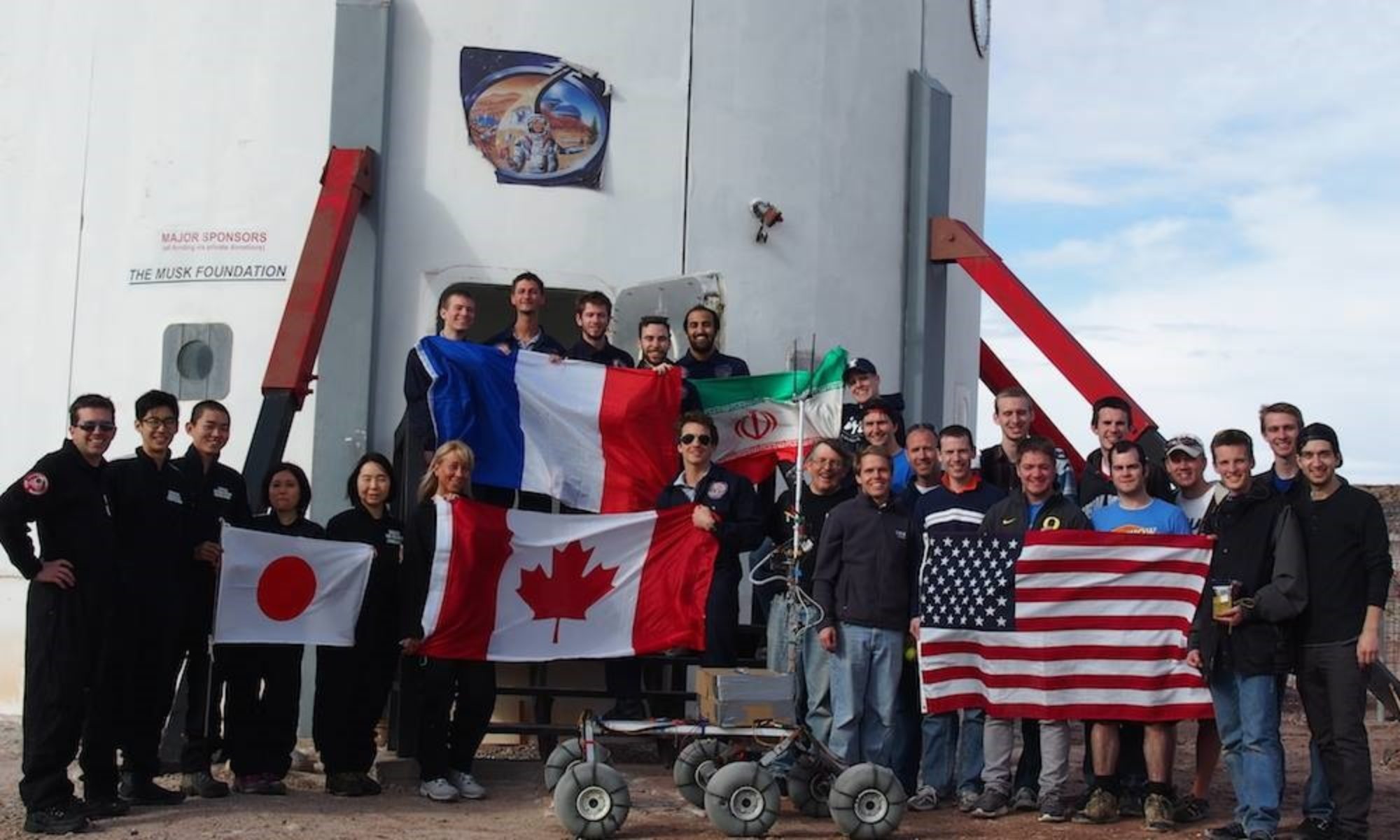

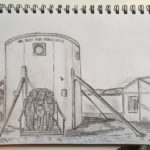
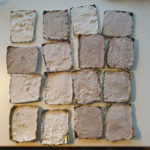
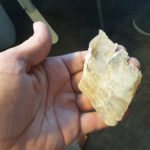
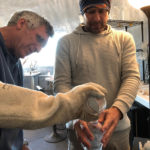
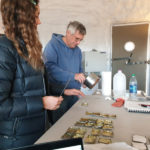
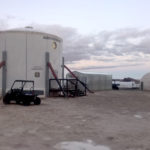
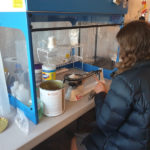
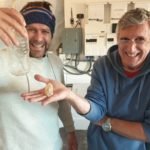
You must be logged in to post a comment.